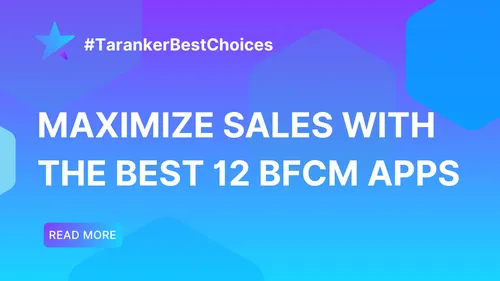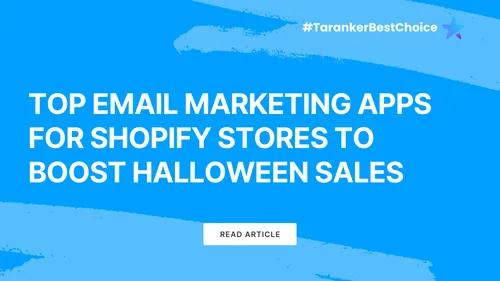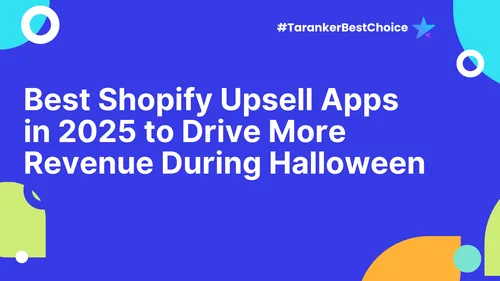Introduction
In an age where consumers are more informed and values-driven than ever, businesses can no longer rely solely on price, convenience, or product features to stand out. The brands that are thriving—especially in the e-commerce space—are those that stand for something greater than just profit. Welcome to the era of sustainable marketing, where long-term success is fueled by purpose, transparency, and social responsibility.
For Shopify merchants and online sellers, embracing sustainability is more than a moral decision—it's a strategic one. Today’s consumers, particularly Gen Z and Millennials, actively seek out brands that align with their ethics, whether that means reducing environmental impact, supporting fair labor practices, or giving back to communities. In return, these customers reward brands with loyalty, word-of-mouth advocacy, and deeper engagement.
In this guide, we’ll explore:
✔ What sustainable marketing really means
✔ Why purpose-driven branding leads to long-term growth
✔ The key elements of a sustainable marketing strategy
✔ How Shopify merchants can implement sustainability in practical, scalable ways
✔ Case studies of e-commerce brands doing it right
1. What Is Sustainable Marketing?

Sustainable marketing is a strategy that aligns a brand’s messaging, practices, and values with long-term social, environmental, and economic responsibility.
Unlike traditional marketing, which often focuses on short-term gains and aggressive selling, sustainable marketing emphasizes:
✔ Transparency in sourcing and operations
✔ Authentic storytelling tied to mission-driven values
✔ Responsible consumption and production
✔ Long-term relationship-building over short-term conversions
It’s marketing with a conscience—and a vision for the future.
2. Why Purpose-Driven Brands Outperform Over Time

a) Builds Deeper Customer Trust
Consumers today are more skeptical than ever. They want to know what a brand stands for, not just what it sells. Brands that lead with purpose and act consistently earn higher levels of trust and loyalty.
✔ Trust leads to repeat purchases
✔ Purpose-driven stories are more memorable
✔ Trust reduces price sensitivity
b) Attracts Values-Aligned Audiences
Customers don’t just want products—they want to be part of something bigger. Brands with a clear mission attract audiences who are eager to support and spread their message.
✔ Creates community, not just customers
✔ Drives word-of-mouth and organic growth
✔ Aligns marketing with lifestyle and identity
c) Future-Proofs Your Business
With increasing regulations and environmental scrutiny, sustainable practices are quickly becoming the norm. By implementing them now, you position your Shopify store ahead of the curve.
✔ Lowers long-term operational risk
✔ Attracts investors and B2B partners
✔ Adapts to evolving consumer demands
3. Pillars of a Sustainable Marketing Strategy

a) Transparency and Accountability
✔ Clearly communicate your product sourcing, production methods, and impact goals
✔ Don’t just claim sustainability—prove it with certifications, audits, or data
✔ If you’re just starting out, be honest about your journey and your goals
📌 Example: Use your Shopify product pages or About section to highlight materials, supplier partnerships, and carbon footprint stats.
b) Storytelling With Purpose
Use content marketing to tell stories that matter—not just to you, but to your customers.
✔ Share your founder story, your "why", and your long-term vision
✔ Highlight your impact through blog posts, videos, or social media
✔ Involve customers in your mission (e.g., planting a tree for every order)
📌 Tip: Authenticity is key. Avoid “greenwashing” or vague claims that can damage trust.
c) Product Design for Longevity
A core tenet of sustainability is reducing waste. Design your product experience with durability, usability, and reusability in mind.
✔ Offer refills, recyclable packaging, or multi-use products
✔ Use minimal and eco-friendly materials
✔ Provide educational content on how to prolong product life
d) Ethical Supply Chains
✔ Choose suppliers that align with your values (fair trade, cruelty-free, carbon-neutral)
✔ Highlight certifications like B Corp, Fair Trade, FSC, or Rainforest Alliance
✔ Build relationships with vendors who care about more than just cost
e) Customer Engagement and Education
✔ Run campaigns that promote conscious consumption (e.g., "buy less, buy better")
✔ Educate customers on how their purchase supports a cause
✔ Use email and SMS not just to sell, but to inspire
4. How Shopify Merchants Can Practice Sustainable Marketing

a) Choose Eco-Conscious Themes and Apps
Shopify’s app store offers many tools to support green initiatives.
✔ EcoCart – lets customers offset carbon at checkout
✔ Planet – Shopify’s own carbon-neutral shipping app
✔ Green Shipping Protection – communicates your commitment to sustainable delivery
b) Optimize Your Supply Chain
✔ Use local fulfillment centers to reduce shipping distances
✔ Partner with print-on-demand vendors offering eco-friendly materials
✔ Monitor packaging waste and invest in biodegradable options
c) Offer Impact-Driven Upsells
Instead of traditional upsells, offer customers the chance to contribute to social causes:
✔ Donate $1 to a nonprofit with each sale
✔ Round up orders for charity
✔ Offer impact badges or "cause tags" on product pages
📌 Tool Tip: Try apps like Shop for Good or Give & Grow to integrate donations seamlessly.
d) Build Sustainable Email Campaigns
✔ Segment audiences to send fewer, more relevant messages
✔ Promote impact reports, not just promotions
✔ Avoid over-mailing and highlight eco-conscious campaigns (e.g., paperless gifting, minimalist packaging)
5. Case Studies: Purpose-Driven Brands Doing It Right
a) Allbirds
From materials to manufacturing, every step of Allbirds’ process is designed to minimize carbon impact. They openly publish their sustainability report and even label the carbon footprint on each product.
b) Package Free Shop
A Shopify store built around zero-waste living. Their product pages explain exactly how each item reduces environmental harm, and their packaging is 100% compostable.
c) Bombas
Their “buy one, give one” model has helped donate millions of socks to the homeless community—making social impact a core part of their brand story.
6. Measuring the Impact of Sustainable Marketing
Key performance indicators (KPIs) for purpose-driven brands go beyond sales:
✔ Customer Retention Rate – loyal customers are often aligned with your mission
✔ Net Promoter Score (NPS) – a reflection of how much people believe in your brand
✔ Impact Metrics – trees planted, plastic saved, meals donated
✔ Earned Media – press mentions and influencer support for your mission
Don’t just measure ROI—measure return on impact.
Conclusion
Sustainable marketing isn’t a passing trend—it’s the future of brand building. Purpose-driven Shopify merchants who embed sustainability into their DNA aren’t just gaining followers or clicks—they’re earning trust, loyalty, and lasting business growth.
💡 Action Step: Audit your brand’s mission, product lifecycle, and customer communication. Identify one way you can become more transparent, sustainable, or impactful—and launch a small campaign around it.













